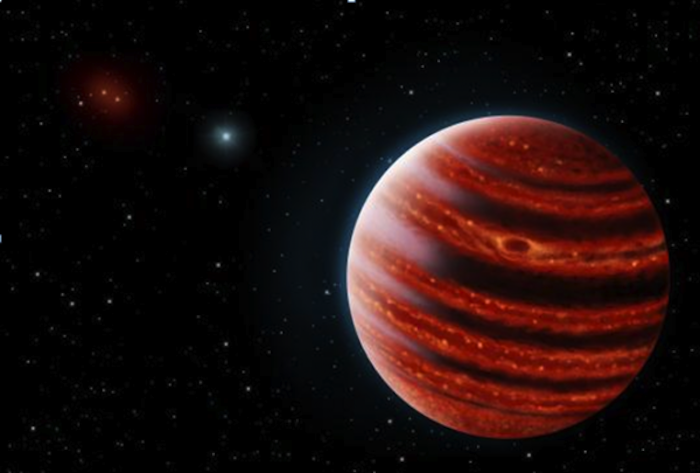-
Tips for becoming a good boxer - November 6, 2020
-
7 expert tips for making your hens night a memorable one - November 6, 2020
-
5 reasons to host your Christmas party on a cruise boat - November 6, 2020
-
What to do when you’re charged with a crime - November 6, 2020
-
Should you get one or multiple dogs? Here’s all you need to know - November 3, 2020
-
A Guide: How to Build Your Very Own Magic Mirror - February 14, 2019
-
Our Top Inspirational Baseball Stars - November 24, 2018
-
Five Tech Tools That Will Help You Turn Your Blog into a Business - November 24, 2018
-
How to Indulge on Vacation without Expanding Your Waist - November 9, 2018
-
5 Strategies for Businesses to Appeal to Today’s Increasingly Mobile-Crazed Customers - November 9, 2018
Astronomers discover ‘young Jupiter’ exoplanet
Stargazers at the Search for Extraterrestrial Life Institute (SETI) used the brand new Gemini Planet Imager to closely examine a star which is 100 million light years away in the constellation of Eridanus.
Advertisement
The planet, dubbed 51 Eridani b, is a million times fainter than its star, 51 Eridani, and shows the strongest methane signature ever detected on an alien planet, which should yield clues as to how the planet formed. Researchers believe the gas giants in our solar system developed by building up a core over millions of years and then absorbing hydrogen and other gases to form an atmosphere.
Now that 51 Eridani b has been discovered, the new system is sure to be scrutinized by future planet hunters using the James Webb Space Telescope, slated for launch in 2018, or the planned Thirty Metre Telescope, a project that Canada joined this year and could see first light in 2024.
To date nearly all exoplanets have been detected indirectly, either from gravitational interaction or the dimming of light as a planet passes in front of its star.
“Of all the directly imaged planets so far, this is the first one where we’ve gotten a spectrum that shows methane”, Bruce Macintosh, the head of the GPI team, a professor of physics at Stanford University and a member of the Kavli Institute for Particle Astrophysics and Cosmology, said to redOrbit via email. She and her graduate students Abhi Rajan and Kim Ward-Duong led the comparison with atmospheres of other known imaged exoplanets and brown dwarfs (objects intermediate between stars and planets) to investigate the nature of 51 Eri b.
“In Jupiter, we know that there is huge content of methane so it makes 51 Eridani b very similar to what Jupiter was when the solar system was young”, Rameau told CBC News. (Planets as young as 51 Eridani b are often as hot as 1,200 degrees Fahrenheit).
A new instrument on Earth designed to to image planets far outside the solar system has discovered its first planet and it’s the most Jupiter-like world ever found.
“This discovery is one of many imaging detections of exoplanets to come in the next few years”, said Song, an associate professor in the department of physics and astronomy in the UGA Franklin College of Arts and Sciences and co-principal investigator on the GPI exoplanet survey team. “This one looks like a planet”. He soon noticed something large orbiting a young star in a triple-star system only 100 light-years from Earth.
The astronomers use adaptive optics to sharpen the image of a star, and then block out the starlight. Other directly-imaged planets are five times the mass of Jupiter or more. GPI detects light emitted directly by planets, rather than light reflected or transmitted through the atmosphere.
“We could quite easily have a planet with an Earth-like mass which simply cannot be seen using current technology”.
“The planet light is fed into a spectrograph specifically designed for analyzing what we see in planets, so it’s nice to see it doing what it’s supposed to do”, he said, adding that he and his colleagues were now looking at 600 young stars near the sun in the hopes that they will be able to find and study more planets. But Jupiter-like exoplanets that have been discovered so far are much hotter than models have predicted, hinting that they could have formed much faster as material collapses quickly to make a very hot planet. While this is still hot enough to melt lead, it is cool enough to be consistent with the cold-start-formation mechanism, the researchers said. Now, a team of astronomers has discovered a Jupiter-like planet within a young system that could serve as a decoder ring for understanding how planets formed around our Sunday.
Advertisement
The researchers said they plan to begin observing 51 Eri b again in late September, when it emerges from behind the sun, in order to map out the exoplanet’s orbit.




























